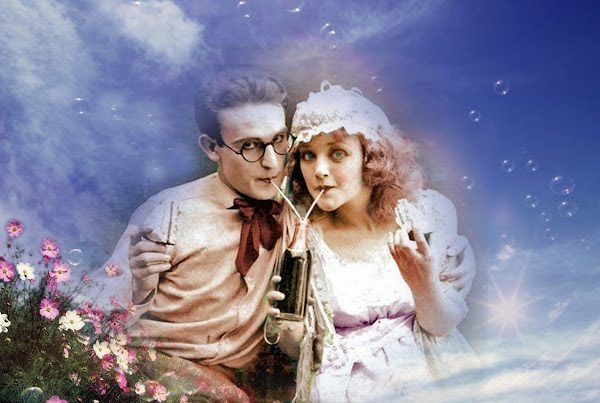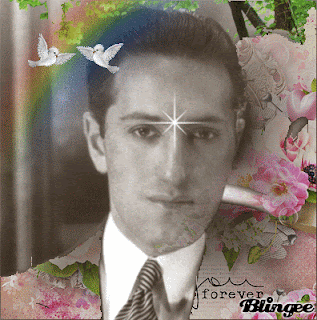Friday, March 4, 2016
Thursday, March 3, 2016
Bob Dylan's auction: give me a buck apiece!
The 6,000-item collection spans nearly the entire length of his 55-year career, and many items have never been seen before
Bob Dylan has sold his personal archive of notes, draft lyrics, poems, artwork and photographs to the University of Tulsa, where they will be made available to scholars and curated for public exhibitions, the school said on Wednesday.
The 6,000 item collection spans nearly the entire length of Dylan’s 55 year-long career, and many have never been seen before. The collection was acquired by the George Kaiser Foundation and the University of Tulsa in Oklahoma.
The 6,000 item collection spans nearly the entire length of Dylan’s 55 year-long career, and many have never been seen before. The collection was acquired by the George Kaiser Foundation and the University of Tulsa in Oklahoma.
The collection also includes master recording tapes of Dylan’s entire music catalogue, along with hundreds of hours of video.
The foundation and the university did not say how much the Bob Dylan archive cost, but the New York Times, which was given an exclusive preview, said it was sold for $15m to $20m.
Tulsa is also the home of a museum dedicated to folk singer Woody Guthrie, one of Dylan’s early influences.
“I’m glad that my archives, which have been collected all these years, have finally found a home and are to be included with the works of Woody Guthrie ... To me, it makes a lot of sense and it’s a great honor,” Dylan said in a statement.
Despite being regarded as “the voice of a generation” for his influential songs of the 1960s and 1970s, Dylan, now 74, has mostly kept his items out of the public eye, resulting in high prices when they occasionally come up for auction.
A handwritten copy of the song Like a Rolling Stone sold for a record $2m at a New York auction in 2014, while the electric guitar he played during the 1965 Newport folk festival sold for nearly $1m in 2013.
The archives handed over to the University of Tulsa include two notebooks with lyrics from the 1975 album Blood on the Tracks, and Dylan’s handwritten lyrics to his 1964 song Chimes of Freedom scrawled on hotel notepaper dotted with cigarette burns. There is also correspondence between Dylan and the late beat poet Allen Ginsberg.
The archives handed over to the University of Tulsa include two notebooks with lyrics from the 1975 album Blood on the Tracks, and Dylan’s handwritten lyrics to his 1964 song Chimes of Freedom scrawled on hotel notepaper dotted with cigarette burns. There is also correspondence between Dylan and the late beat poet Allen Ginsberg.
BLOGGER'S NOTE. This report is incomplete. Having made only $20 million on the old papers he had lying around, Bob Dylan decided to clean all the old junk out of his closets and see what he could get for it.
The items were sold at auction at undisclosed prices.
ITEM 476
Bob Dylan's first school assignment, an untidily-written poem called It's A Hard Rain's Gonna Fall, given a C+ for effort.
The items were sold at auction at undisclosed prices.
ITEM 476
Bob Dylan's first guitar. Formerly displayed in Smithsonian as First Guitar in Human History. List price, $4,000,000.00
ITEM 14
Bob Dylan's hairpiece, hitherto kept secret from the public. List price, $4.79
ITEM 14A
Bob Dylan's first school assignment, an untidily-written poem called It's A Hard Rain's Gonna Fall, given a C+ for effort.
ITEM 479
Bob Dylan's first girlfriend Minnie Zota, a resident of Shadylady Nursing Home, Red Hen, Rhode Island. List price, negotiable.
ITEM 37
Bob Dylan's first set of encyclopedias, sold door-to-door to his neighbor Manny Manheim, borrowed in 1957 and never returned. List price, whatever the list price was in 1957.
ITEM 53
Bob Dylan's horse, Spaghettineck. Taxidermied and mounted on wheels in 1982. List price, pretty high.
ITEM 2
Bob Dylan's dog, Spoons. List price $5,000,000.00. Cupcakes not included.
ITEM - ?

Bob Dylan's second school assignment, also known as "You've Improved!' List price, seven cents or so.
ITEM 1
Unidentifiable artifact. Extremely rare. Speculation suggests an egg slicer which was used as a rack for curing marijuana. May also be the world's only combination banjo/water canteen.
PHOTO GALLERY. These represent rare, historic photos which chart the course of the illustrious Mr. Dylan's life in music and momentous world affairs. For these he will take a buck apiece.
Bob Dylan's class picture. He has just sneezed in the photo and spread a cloud of lethal disease throughout the school, killing many.
Artist's rendition of Bob after each of his first four music lessons. The artist, Hibbie Zimmerman, was quoted as saying, "There will always be a little bit of ape left in Bobby."
Bob's first high school band, the Ramblin' Rockets. Also known as the Jumpin' Jeronimos, the Hibbing Hoot-owls, the Gymbusters, Zimbo and the Zeitgeist, and The Two Tops.
Bob's favourite picture of his sometime girlfriend/goddess/priestess/sponge-off partner/ice-maiden/coat-tail queen, Joan Baez. Shortly after this photo was taken she dedicated a song to him, "Nothing Rhymes with Genius (that's why you treat me so badly)". Later she complained that the diamond he gave her had turned to rust.
Gerry Mathers in an unsold pilot for a TV series, Leave it to Bob.
Bob Dylan's second high school band, which Bob admits were "pretty green". Bob never named this group, but they were known around Hibbing Collegiate as "Those Guys Again".
Bob's first copyright infringement notice. (He said a buck apiece. OK?)
MISCELLANY.
Bob Dylan's socks. May contain traces of his DNA.
Bob Dylan's fox. No one knows how to get it down from there.
Bob Dylan's garbage can. Suitable for framing. (Note: monetary accessories not included.)
Spam I am
Last night, very late, I got into a Thing, and as usual when I am into a Thing, I don't stop until it feels complete. Which this never will be, because it's one of the big themes/obsessions of this blog.
Old ads. Gifs of old ads, so you won't need to watch all of it. Lots of people say "I hate gifs", and I will tell you why. 90% of the ones I see on "real" sites are about 2 seconds long, a near-violent jerking back-and-forth of figures. I don't even know why those are considered "real" gifs, as it is now easy as hell to make 20- or 30-second ones with utterly simple programs like Makeagif or Giphy:
http://makeagif.com/youtube-to-gif
https://giphy.com/create/gifmaker
These.
Some time ago I found a wonderful YouTube channel called MattTheSaiyan, featuring mostly classic ads like the ones I giffed last night. The ones I chose to gif (and I herein present only about half of them) struck some kind of a chord with me, either from familiarity or just plain oddness. It's a weird feeling to see an ad you haven't seen since you watched Queen for a Day when you were seven. Why do we remember these things? As a rule, we were forced to watch them over and over again.
Kind of like these gifs.
One category I particularly like are VERY old ads, probably done live in the middle of a variety show. MattTheSaiyan's ads are edited from reels/videos/DVDs of early television. The "boooop" of an organ is often heard at the beginning of them, indicating live soap operas. An announcer will come on and earnestly present the ad. "Crawls" back then looked like they were mounted on rolls of paper or canvas, and were very likely cranked by hand.
Early advertising was very "in your face", in that someone had finally discovered that TV was not just radio with still pictures. Things MOVED on TV, so suddenly, in the ads, everything was moving. Dove's "1/4 cleansing cream" was so much a part of their ads for so long that I had to include it here along with all the lovely doves. Interestingly enough, Dove now claims that women should think they're beautiful no matter what they look like. They should, too - as long as they use Dove products.
A lot of the gifs I made last night went to 20 seconds, and really, those are better-quality and more essay-like than these short ones. But they can run a bit weary after a while, if you're not a real afficionado. This is the short version of the Joy ad, the best part really, illustrating that in-your-face, literally explosive quality.
I love this one, and was quite impressed with it when I first saw it. From radiant bathing beauty to radioactivelly CLEAN beauty to. . . bride. It all fits together, doesn't it? If you smell this good, you're going to land a (preferably-rich) husband for sure.
This is a nice one, if a bit vertigo-inducing. Things are literally comin'-atcha. I have a feeling this was a 1950s ad. It's as if they're visually turning up the volume.
You could do anything to it that you would do to a ham. So says the ad. It was cheep, this Treet. It opened with a key, like a sardine can. And the strange thing is, fried up golden or baked in the oven, it really wasn't too bad. Kind of like really deluxe army rations. Beat the hell out of creamed chipped beef on toast.
Tuesday, March 1, 2016
Have We Been Playing Gershwin Wrong for 70 Years?
http://www.nytimes.com/2016/03/02/theater/have-we-been-playing-gershwin-wrong-for-70-years.html
Have We Been Playing Gershwin Wrong for 70 Years?
It is one of the most famous pieces of American music — but for 70 years orchestras may have been playing one of its best-known effects wrong.
The work is George Gershwin’s
jaunty, jazzy symphonic poem “An American in Paris,” and the effect
involves a set of instruments that were decidedly not standard equipment
when it was written in 1928: French taxi horns, which honk in several
places as the music evokes the urban soundscape that a Yankee tourist
experiences while exploring the City of Light.
The question is what notes should those taxi horns play. In something of a musicological bombshell, a coming critical edition of the works of George and Ira Gershwin being prepared at the University of Michigan will argue that the now-standard horn pitches — heard in the classic 1951 movie musical with Gene Kelly, in leading concert halls around the world, and eight times a week on Broadway in Christopher Wheeldon’s acclaimed stage adaptation — are not what Gershwin intended.
The finding promises to divide musicians, and could require instrument-makers, sellers and renters — who now offer sets of tuned taxi horns specifically for “An American in Paris” — to consider investing in new sets tuned to the new notes. The change would give a subtle, but distinctly different, cast to a classic score that was influenced by some of the leading composers of its day, and which followed in the footsteps of other works that employed so-called “found” instruments, including Satie’s 1917 ballet “Parade,” which uses a typewriter and gunshots, and Frederick Converse’s 1927 “Flivver Ten Million,” an ode to the Ford automobile, which uses car horns.
“I have a feeling that percussionists are going to be somewhat put out
by this whole conclusion,” said Mark Clague, the editor in chief of the
critical edition, who attended some test performances of the revised score by the Reno Philharmonic last month.
The
ambiguity stems from how the taxi horn parts are notated in Gershwin’s
original handwritten score. To put it in Gershwin terms, we got rhythm:
The score shows that the horns play sets of accented eighth notes. But
when it comes to pitch, things are less clear. Gershwin’s score labels
the four taxi horns with a circled “A,” a circled “B,” a circled “C” and
a circled “D.” Those circled letters have been interpreted as
indicating which note each horn should play — A, B, C and D on the scale
— since at least 1945, when Arturo Toscanini used those pitches in
recording the piece with the NBC Symphony Orchestra.
This is the original version recorded in 1929 under Gershwin's supervision. Take note of the sound of those taxi horns!
But
the new critical edition will argue that Gershwin’s circled letters
were merely labels specifying which horns to play, not which notes. Mr.
Clague, an associate professor of musicology at the University of Michigan,
mentioned that Gershwin handpicked taxi horns to buy during his 1928
trip to Paris, and that friends and colleagues recalled that he had been
particular about which notes they played. Mr. Clague also pointed to
the evidence of a Victor recording
of “An American in Paris” that was made in 1929, under Gershwin’s
supervision and presumably using his horns: The taxi horns on that
recording sound a more atmospheric, more dissonant set of notes: A flat,
B flat, a much higher D, and lower A.
Gershwin’s
original instruments seem to have been lost. Michael Strunsky, 81, a
nephew of Ira Gershwin and trustee of his estate, said in a telephone
interview that his father, William English Strunsky,
had played the taxi horns when George Gershwin first gave an informal
recital of the piece for the family in 1928 after sailing back from
Europe.
“I
went looking for those taxi horns once,” Mr. Strunsky said. “And
somewhere in the moves back and forth, and this and that and the other
thing, they disappeared.”
Russ Knutson, the owner of Chicago Percussion Rental
in Illinois, who rents out tuned horns for “An American in Paris” and
has played them on occasion, said in an interview that he thought that
the currently accepted A, B, C and D pitches “fit exactly in the score.”
“The
whole country and the whole world have been oriented to doing it with
those four pitches,” he said in a telephone interview. “All of the
recordings you’ve heard are with those four pitches.”
But Trey Wyatt, a percussionist with the San Francisco Symphony who estimated that he had played the horn parts 40 or 50 times, and who rents out several sets through his company, California Percussion Rental, said that he was intrigued by the finding.
Rob
Fisher, the musical score adapter and supervisor of the new staging of
“An American in Paris” currently on Broadway, said that he agreed that
the A, B, C and D labels were names and not pitches, but that the show
had ended up using the standard horns.
But
he questioned whether the pitches used in the Victor recording should
be taken as gospel. “I don’t ever want to say what was in somebody’s
mind,” he said. “Were those the four horns that made him the happiest
that day, when he was picking horns? I just feel like if he’d wanted
exact pitches for his horns, he was really good about writing down
intentions.”
Mr.
Clague said that between the 1929 recording that Gershwin supervised
and the 1945 Toscanini recording, which seemed to help establish a new
performance tradition, there was great variation in how the taxi horns
were played. But he said that his musical analysis gave weight to the
idea that the pitches used in the 1929 Victor recording work best.
“George was thinking harmonically and melodically with the taxi horns,”
he said. “It’s not just a sound effect.”
But
he added that there would have been an easy way of avoiding the
ambiguity entirely. “I think George would have saved everybody a lot of
trouble,” he said, “if he had just numbered them ‘1,’ ‘2,’ ‘3,’ and ‘4’
rather than ‘A,’ ‘B,’ ‘C’ and ‘D.’”
Blogger's Observations. I decided I'd do this whole thing by ear, as a sort of auditory blind taste test. I'd try to determine which version was the "true" one: the one we currently hear in concert halls and have been hearing for 70 years, or the first recording ever made in 1929, supervised by Gershwin himself.
I've been listening to An American in Paris since I was a wee tot, and I even remember my mother explaining to me that it used real taxi horns, which I thought was pretty strange. I'm not a musician, but I was saturated in music from the get-go, surrounded by real musicians, and by inheritance came in with the same equipment, meaning a pretty sharp ear. So I sat back and just plugged myself in to the sound, going back in time to that 78 r.p.m. record made in 1929.
The very first blast on the first taxi-horn made me sit bolt-upright and yell, "AAAAHHH!" It was completely different, a totally different sound! The blasts that came after that were even more of a revelation: lower, earthier, more dissonant, with the odd higher note to add harmonics (for Gershwin heard music in noise: he said so all the time). These sounds were just so much more. . . Gershwiny.
I am utterly convinced that these are the taxi horns Gershwin originally used. These are the horns he collected while in Paris, scrounging around in auto shops and junk stores, then picking four out of a couple of dozen to match his score - no, wait. It's bigger than that. THE SCORE WAS MATCHED TO THE HORNS. The two came together like a hand in glove.
You wonder how orchestras could've gotten it so wrong for so long. To write A, B, C and D and circle them is pretty obviously a way to label each horn, not describe the horn's tone. It's just self-evident, isn't it?
Now people are saying they wish Gershwin hadn't been so "ambiguous". He was a genius, people, and geniuses are ambiguous by nature, leaving the rest of us snail-brains in the dust. Now some percussionists, suffering from defensiveness and hurt pride and unable to admit they may have been wrong, are insisting WE had it right all along, and Gershwin had it wrong. Or that it didn't matter. Or that, when making the original 1929 recording, he just picked out the horns he happened to want on that particular day, pulled them out of the junk pile pretty much at random.
DON'T MAKE ME SCREAM.
Gershwin was an utter perfectionist. He never took stabs at things, not even improvising. It was from God's mouth to his ear/fingers. His scores were as immaculate as Mozart's, not a note out of place. He wouldn't just rummage around in his junk drawer and pull out a few taxi horns.
The problem is, he did not happen to consider that people would not know how to reproduce those exact sounds in the years and decades to come. Perhaps he believed it was self-evident and that they couldn't possibly get it wrong. So somebody took a flying-leap guess based on some letters with circles around them on the score (and if the piece is in the key of A, it obviously would have a great big circle drawn around the A. Isn't that how you tell what key something is in?), and thus the whole thing became standardized.
I want to keep listening to that original recording, except that it makes me want to cry. Gershwin went through so much in his short, sometimes very painful life: his masterpiece Porgy and Bess was cut by about a third for its first performance (though most operas more than exceed its original length); the critics slung mud at it and called it garbage. He was a sensitive soul and he DID care what people thought, though artists aren't supposed to. And then he died at 38, and in so much agony, essentially alone.
So for God's sake, people. Get those taxi horns right! It's the least you can do for poor George.
Blogger's Observations. I decided I'd do this whole thing by ear, as a sort of auditory blind taste test. I'd try to determine which version was the "true" one: the one we currently hear in concert halls and have been hearing for 70 years, or the first recording ever made in 1929, supervised by Gershwin himself.
I've been listening to An American in Paris since I was a wee tot, and I even remember my mother explaining to me that it used real taxi horns, which I thought was pretty strange. I'm not a musician, but I was saturated in music from the get-go, surrounded by real musicians, and by inheritance came in with the same equipment, meaning a pretty sharp ear. So I sat back and just plugged myself in to the sound, going back in time to that 78 r.p.m. record made in 1929.
The very first blast on the first taxi-horn made me sit bolt-upright and yell, "AAAAHHH!" It was completely different, a totally different sound! The blasts that came after that were even more of a revelation: lower, earthier, more dissonant, with the odd higher note to add harmonics (for Gershwin heard music in noise: he said so all the time). These sounds were just so much more. . . Gershwiny.
I am utterly convinced that these are the taxi horns Gershwin originally used. These are the horns he collected while in Paris, scrounging around in auto shops and junk stores, then picking four out of a couple of dozen to match his score - no, wait. It's bigger than that. THE SCORE WAS MATCHED TO THE HORNS. The two came together like a hand in glove.
You wonder how orchestras could've gotten it so wrong for so long. To write A, B, C and D and circle them is pretty obviously a way to label each horn, not describe the horn's tone. It's just self-evident, isn't it?
Now people are saying they wish Gershwin hadn't been so "ambiguous". He was a genius, people, and geniuses are ambiguous by nature, leaving the rest of us snail-brains in the dust. Now some percussionists, suffering from defensiveness and hurt pride and unable to admit they may have been wrong, are insisting WE had it right all along, and Gershwin had it wrong. Or that it didn't matter. Or that, when making the original 1929 recording, he just picked out the horns he happened to want on that particular day, pulled them out of the junk pile pretty much at random.
DON'T MAKE ME SCREAM.
Gershwin was an utter perfectionist. He never took stabs at things, not even improvising. It was from God's mouth to his ear/fingers. His scores were as immaculate as Mozart's, not a note out of place. He wouldn't just rummage around in his junk drawer and pull out a few taxi horns.
The problem is, he did not happen to consider that people would not know how to reproduce those exact sounds in the years and decades to come. Perhaps he believed it was self-evident and that they couldn't possibly get it wrong. So somebody took a flying-leap guess based on some letters with circles around them on the score (and if the piece is in the key of A, it obviously would have a great big circle drawn around the A. Isn't that how you tell what key something is in?), and thus the whole thing became standardized.
I want to keep listening to that original recording, except that it makes me want to cry. Gershwin went through so much in his short, sometimes very painful life: his masterpiece Porgy and Bess was cut by about a third for its first performance (though most operas more than exceed its original length); the critics slung mud at it and called it garbage. He was a sensitive soul and he DID care what people thought, though artists aren't supposed to. And then he died at 38, and in so much agony, essentially alone.
So for God's sake, people. Get those taxi horns right! It's the least you can do for poor George.
Monday, February 29, 2016
Would it KILL you to applaud?

I don't know Jenny Beavan from a hole in the ground, nor do I know anything about the Mad Max series, though judging from last night the franchise is more than thriving. But this! This is the height of ungraciousness in an audience. This is annoying in that the clip only lasts 3 seconds and keeps repeating (sorry, folks, but that's all I've got!). But focus on those men sitting on the aisles - you know, the ones who aren't applauding a legendary costume designer who has just won an Academy Award.
Not. Applauding. At. All.
Take a look, furthermore, at their expressions, and we see: snickering; blankness; angry contempt; catatonia; more contempt, even more snarly and vitriolic - before we almost get to Julia Roberts, who, bless her heart, is beaming.
Costume designers usually dress badly. They look frumpy, like Edith Head, or sink into the wallpaper, like Stella McCartney. It's what they do; it's what we expect of them. Unable to keep up with the hopeless and overstuffed glamour of Hollywood's most narcissistic night, Jenny Beavan made a decision to dress however-the-hell and be comfortable. In fact, she went on record to say that, for her, this faux biker-Mama look was "dressed-up".
Stephen Fry, my favorite maiden grand-aunt, once pronounced Beavan a "bag lady", and it's true that she's laying on the anti-glamour pretty thick here. But the more I look at these unguarded facial expressions - the anger, the disgust, the refusal to even politely applaud - the more disgusted I am with the Hollywood glamouratti and their stick-up-the-ass brigade of tuxedoed snotheads.
Keep looking at this gif and it just gets more disturbing. Really, nobody is applauding her. I only see two people very feebly making an attempt, and everyone else is sitting there like stone. Two of the men have their arms crossed so hard, they would have to be pried apart with a crowbar.
What is WRONG with these people anyway? The message, raw and in your face, is "you don't look right. What the hell are you doing winning an award?" It's a non-acknowledgement, pretending that nobody's walking up the aisle, or else somebody made a mistake and let a real person in.
Fortunately she does not give a rip. This telling three-second clip says everything about them (and their hateful pettiness and spite) and nothing about her except a refreshingly up-yours attitude.
POST-BLOG OBSERVATION. This, apparently, is the jacket she was wearing, a "pleather" from Marks and Spencers. Looks a bit slim-lined for her full figure, but never mind. All those zippers give it a sort of dominatrix look. I had a jacket like that once, and the zipper busted pretty quickly. I want a look at the back of it - I'll try to find an image of it.
If Cate Blanchett had worn this, they would've called it a "bold fashion statement".
Of course! It's a Mad Max logo. As in Fury Road, as in "I just won Best Costume Design for this".
I here-and-now predict a massive run on these jackets. Marks and Spencer won't be able to keep up.
Subscribe to:
Posts (Atom)















































